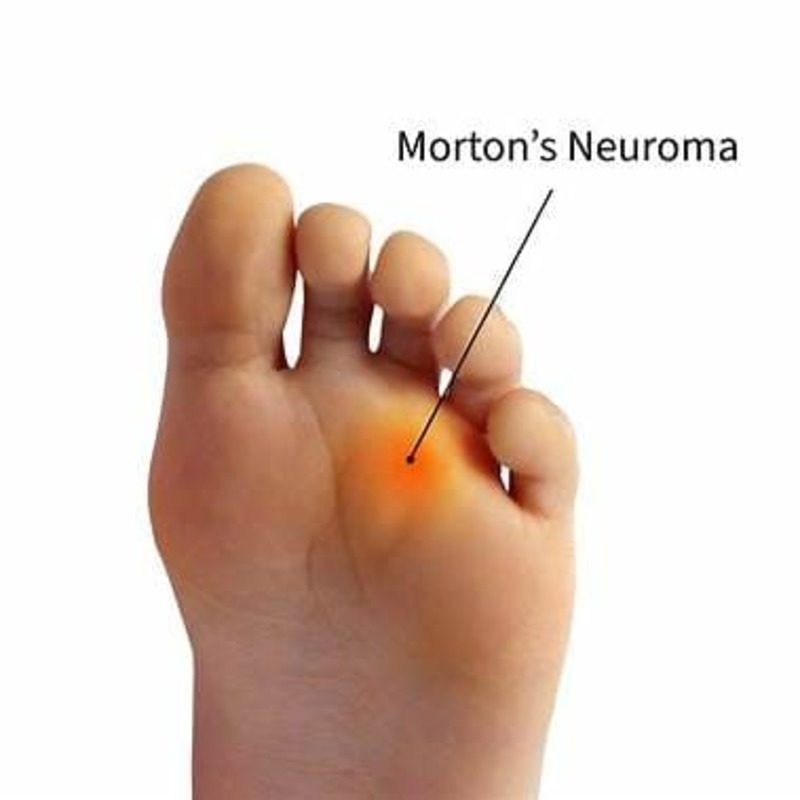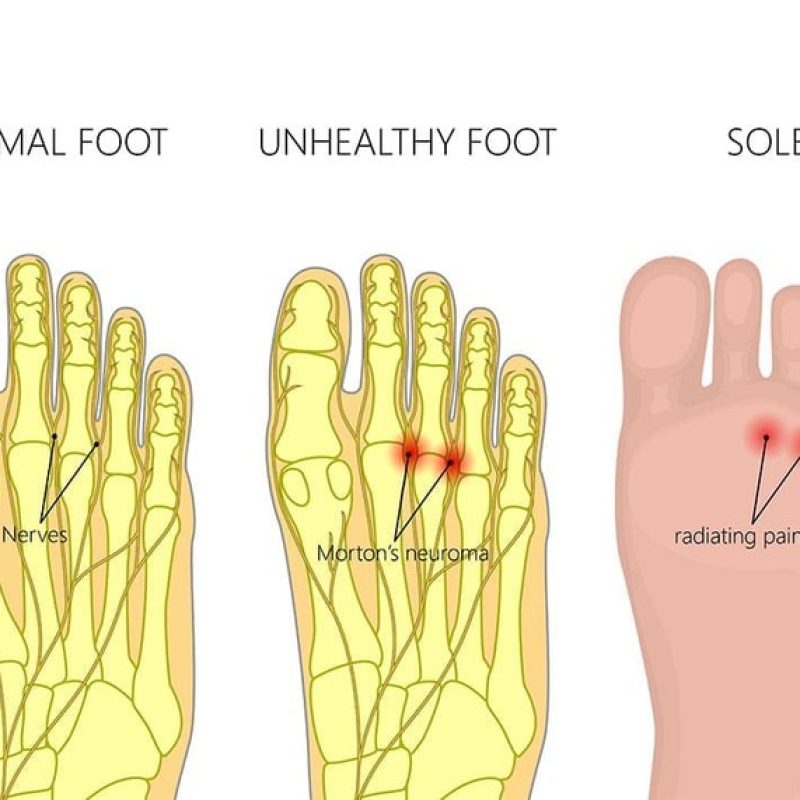Why Does It Feel Like You’re Walking on a Pebble? It Could Be a Neuroma
Foot pain can become a frustrating part of life after 55, but not all discomfort should be chalked up to aging. If it feels like you’re walking on a pebble or constantly adjusting a sock that isn’t actually bunched up, there’s a chance you’re dealing with a condition called Morton’s neuroma.
This common but often overlooked foot issue involves a thickening of tissue around a nerve, typically located between the third and fourth toes. While it’s not a tumor in the traditional sense, the growth can press on the nerve and cause significant discomfort, especially during walking or prolonged standing.
“It can feel like there’s something stuck in your shoe, or a sharp burning under the ball of the foot,” says Dr. Arnold J. Zuckman, a Connecticut-based podiatrist who has treated thousands of patients with neuroma. “People may also experience tingling or numbness, and the symptoms tend to worsen with tight shoes or increased activity.”
Why Neuromas Are Common After 55
As we age, our feet change in structure and sensitivity. Years of pressure, footwear choices, and natural fat loss in the soles all contribute to increased nerve irritation. According to Dr. Zuckman, neuromas become more common in older adults for several reasons, including the long-term use of narrow or unsupportive shoes, standing for long hours, and age-related foot changes like flat arches or bunions.
“Your foot changes over time just like the rest of your body,” he explains. “If you don’t adjust your habits or footwear, small problems can evolve into daily pain.”

What Neuroma Symptoms Feel Like
One of the challenges in diagnosing a neuroma is that it doesn’t always come with visible swelling or redness. Instead, patients often describe a sensation of stepping on something that’s not there, along with burning, tingling, or numbness that radiates into the toes. Pain may flare up with certain shoes or after walking long distances, then fade, only to return more frequently over time.
If you notice persistent discomfort in the ball of your foot, especially with certain shoes or activities, it’s worth seeking evaluation from a podiatrist before symptoms progress.
How to Prevent Neuroma Pain Before It Starts
Preventing neuroma—or stopping early symptoms from getting worse—comes down to supporting your feet in smarter ways as you age. Footwear is the biggest factor. Look for shoes that offer wide toe boxes, cushioned soles, and low heels to reduce pressure on the nerve.
Dr. Zuckman also recommends orthotics to help redistribute weight across the foot more evenly. Stretching and strengthening exercises that target the feet and toes can improve flexibility and muscle balance. For those who are active, switching from high-impact activities like running to lower-impact options such as walking, swimming, or cycling can give the feet a much-needed break.
“Your feet weren’t meant to be squeezed into shoes that don’t fit,” he emphasizes. “Comfort and support should always come before fashion.”
What to Do If You’re Already in Pain
If neuroma symptoms are already disrupting your daily routine, early treatment can make a big difference—and often prevents the need for surgery down the road. Many patients see improvement with conservative care, including changing footwear, adding custom or over-the-counter orthotics, and using anti-inflammatory medications.
In some cases, corticosteroid injections or physical therapy may be used to calm inflammation and reduce nerve irritation. Surgery is typically reserved for severe cases where symptoms don’t respond to other treatments.

“The vast majority of patients improve without surgery, especially when the problem is caught early,” says Dr. Zuckman.
Neuromas are more common than many realize, especially among older adults who have spent decades on their feet. But foot pain shouldn’t be something you simply tolerate. Paying attention to the signs and making smart changes, like upgrading your shoes and consulting a podiatrist, can help you stay active and pain-free.
Whether it feels like you’re stepping on a pebble or just can’t get comfortable in your shoes, your body may be sending a message that it’s time to listen to your feet.
About the Author
Dr. Arnold J. Zuckman is a board-certified podiatrist based in Connecticut, specializing in foot and ankle care. He earned his degree from the Ohio College of Podiatric Medicine and completed his residency at Harrison Community Hospital. With decades of experience, Dr. Zuckman treats a wide range of conditions including bunions, diabetic foot care, and sports-related injuries. He currently practices at Northeast Medical Group Podiatry and is affiliated with Yale New Haven Health Bridgeport Hospital.




